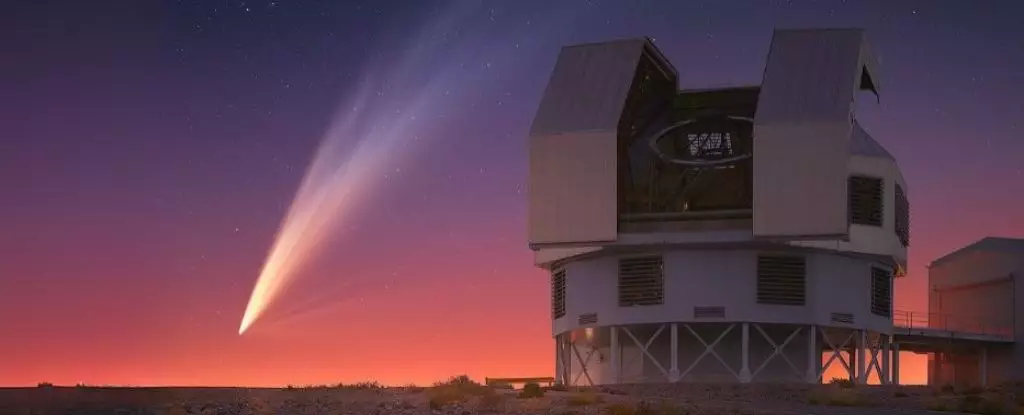Comets have long captured the imaginations of astronomers and skywatchers alike. Their transitory appearances, marked by luminous tails and distinctive nuclei, are often celebrations of celestial wonders that stir curiosity and excitement. Among these cosmic travelers, Comet C/2024 G3 ATLAS has emerged as a captivating subject, promising both allure and scientific intrigue since its discovery in April 2024.
The Discovery and Early Observations
Discovered on April 25, 2024, by the Asteroid Terrestrial-impact Last Alert System (ATLAS), C/2024 G3 ATLAS quickly garnered attention for its potential brilliance. Predicted to reach its perihelion—the point in its orbit closest to the Sun—on January 13, 2025, the comet presented astronomers with the tantalizing question of whether it would live up to early expectations. Historically, comets have displayed a range of behaviors, with some, like C/2012 S1 ISON, disintegrating spectacularly, while others, such as C/2013 W3 Lovejoy, thrived under the intense solar influence.
As G3 ATLAS approached perihelion, astronomers watched closely. Initially reported to have reached a peak brightness of -3.8 magnitude, the comet quickly eclipsed brighter historical counterparts, signaling a promising display for observers keen to catch its glory. However, the anticipation was tempered with uncertainty, as the unpredictability of cometary behavior was a concern. This duality encapsulates the essence of comet observation: the excitement of the unknown laced with the potential for disappointment.
On January 13, 2025, G3 ATLAS reached its perihelion, skimming 14 million kilometers from the Sun. This close encounter was a crucial moment for the comet, as its survival hinged on withstanding the intense heat and gravitational pull of the Sun. Observations from telescopes, particularly SOHO’s LASCO C3, became instrumental in tracking its path, capturing breathtaking images that recorded its fading brightness.
Reports flooded in from amateur astronomers and astrophotographers. Alongside the bright display, the comet’s tail, shaped and stretched by the solar wind, provided a visual spectacle that reflected its unique characteristics. Yet, as the comet ventured southward, its visibility diminished for northern observers, highlighting a recurring pattern in comet sightings where southern hemisphere skywatchers often enjoy the best views.
As G3 ATLAS transitioned through perihelion, observers noted a worrying trend. By January 18, images revealed signs of distress in the comet’s nucleus, marking it as a ‘headless comet.’ The once-prominent nucleus faded, while the tail remained visually stunning, creating a striking juxtaposition—a vivid streak of dust and ion, now detached from its core. This phenomenon underscores the dynamic nature of comets; just as they can illuminate the night sky, they can also crumble under the throes of solar proximities.
Currently, G3 ATLAS shines at a magnitude of approximately +5, illuminating the constellation Piscis Austrinus. The trajectory of this comet, which is on a profound orbital journey lasting over 160,000 years inbound, sparks curiosity about its eventual 600,000-year outbound trajectory. The remnants of G3 ATLAS may not return for millennia, yet the fragments may one day greet the inner solar system once again, echoing the transient nature of these celestial wanderers.
Reflections on Comet Observations
The case of C/2024 G3 ATLAS revitalizes discussions about the nature of comet hunting. The unpredictability of these cosmic bodies can lead to thrilling discoveries or disappointments. For many amateur astronomers, the pursuit of comets often leads to a deeper appreciation of the cosmos. Seasoned astrophotographer Dylan O’Donnell’s experiences emphasize that the challenges of comet hunting are as significant as the achievements.
Despite the ups and downs of G3 ATLAS’s journey, its observation provided a shared experience for a global community of astronomers, rekindling enthusiasm for celestial events. Looking ahead, enthusiasts can only hope that G3 ATLAS might still reveal its secrets in the twilight sky, illuminating our understanding of these elusive entities and perhaps setting the stage for future discoveries in the evolving dance of our universe.

Leave a Reply